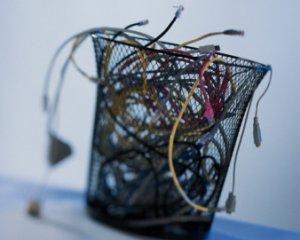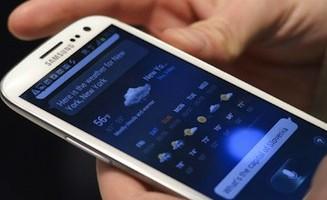If you're a developer, you'll want to keep a close eye on the hardware side of mobile, because I think we're on the cusp of an even bigger revolution. Today's external devices that cable-connect to your mobile are just an interim step. A whole range of new devices is coming that will add power to your smartphone -- wirelessly.
The Potential's Visible
Just last week, I got both a Square and a PayPal reader. These are those little dongles that plug into the headphone jack and let you handle credit card transactions anywhere. I'll now be able to accept credit cards for my books and back-of-room sales when I'm on the tech speaking circuit. Both services have iOS/Android apps that work right on the phone and a cloud back-end, all of which streamline the whole payment process, at remarkably modest fees. Then there's the on-the-go (OTG) host cables. While I don't have one for my Galaxy S3, I do use a “host” adapter with my ASUS Transformer Prime tablet. I've hooked up card readers, USB drives, my 500 GB external disk drive, an old USB Gyromouse and wireless keyboard. OTG cables work the same way. It's another example of how external devices make our new all-in-one user interface, commonly known as a smartphone, more useful.
The 'No Wires' Era
I think smartphones are about to become our default, go-to user interface for any number of cool and interesting products and services. Using your Galaxy S3, you can already sit on your couch and change the settings on your router or DVR through an integrated local Web server and pages. I hate to tell you this, but that's almost ancient technology. Have you seen the Livescribe WiFi pen? This little 8 GB beauty records everything you hear, say, write or draw. It holds up to 200 hours of audio and thousands of pages of notes. It connects to Evernote via WiFi, so your data is always stored securely and is easily accessed from your smartphone. Since your content is in the cloud, you can get to it from any tablet or notebook, as well. Then, there's the
SparkCore. According to the company's Kickstarter page, “the Spark Core is an Arduino-compatible, Wi-Fi enabled, cloud-powered development platform that makes creating Internet-connected hardware a breeze.” The device basically mates an Arduino microcontroller to an on-board WiFi chip and combines the works with a programming service in the cloud. An additional, ultra-cool feature is that SparkCore can be programmed over the air via WiFi. The hardware and firmware will be open source, as will be a version of the development environment, which you'll be able to run locally on your own server, if you like. This kind of DIY setup opens up all kinds of possibilities for products and services that connect and are controlled by smartphones. Imagine being able to integrate your washing machine or car with your Android phone, so you can change the spin cycle or start the car remotely on a cold morning.
Only the Start
In the not too distant future, I'd imagine that the $39 SparkCore will become smaller in size and less expense as manufacturing and logistics are optimized. How long do you think it will be before other groups start offering their versions of the hardware? Competition should bring us ever more powerful combinations. Network hardware price has always been a sticking point to implementing
the Internet of Things. Now we're making it cost-effective and tightly integrating it with the smartphone user interface paradigm. It's truly a revolutionary combination, and I'm looking forward to the crazy stuff that mobile developers haven't even dreamed up -- yet.



![Go to article Mastering Mobile Development's Landscape [DiceTV]](/binaries/small/content/gallery/dice/insights/2012/08/dice-tv-8-21-12-thumbnail.jpg)